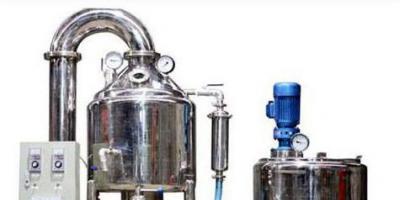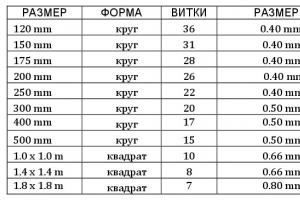Dear visitors of the portal! The archive of medical consultations for 13 years contains a large number of prepared materials that you can use. Best regards, editors
The “medical consultations” section is suspending its work.
Natalia asks:
Good day!
Your consultation is really needed.
We are planning vaginal intercourse (so far to no avail).
They did a blood test: in the person - Mycoplasmosis lgG 1/10 to 1/10, they didn’t find it in me (it wasn’t found in me a few days ago, it was diagnosed in me, but they didn’t prescribe it for me).
What do you mean, I need a bath, but the doctor hasn’t prescribed anything for me again? And how important is it?
Answers:
Hello, Natalia. First of all, if mycoplasmas are present, don’t mind showing them to the point of virulence! In other words, the presence of IgG before them cannot be confirmed about their presence in the body, but only about those who have come into contact with them and are immune to them. Otherwise, before smelling it is necessary to make sure that the stench does not lead to mycoplasmosis (inflammation). Since there is no ignition process, you can be pregnant, but during the hour of pregnancy you should regularly check for the activation of mycoplasmas. If the wine is inflamed, it is simply necessary to immediately undergo adequate treatment. Be healthy.
Katya asks:
Good afternoon. I took tests for PCR and urogenital infections. The tests confirmed: 1. Mycoplasma hominis 2. U.parvum 3. Gardnerella vaginalis. My husband was tested and he tested positive for U.parvum. We completed a course of treatment. We took the tests again. Nothing was found in my husband, but in me - Mycoplasma hominis. Tell me, do I need to re-take the course of treatment or is it okay, or re-take the test? How serious is this or should I not worry? Thank you
Answers Consultant at the medical laboratory "Sinevo Ukraine":
Good afternoon, Katya. You did not indicate how long after treatment you re-tested. The fact is that PCR is a very sensitive technique that detects not only viable microorganisms, but also those that have already died; perhaps you did PCR too early after treatment. But to be on the safe side, I recommend protecting yourself with your husband for now using a condom, and retaking the tests after 3 months. If the results repeat or there are complaints, then re-treatment will be necessary. If not, then nothing needs to be treated. Be healthy!
Nastya asks:
Hello! Mycoplasmas were discovered in me, I was prescribed an expensive treatment, which I underwent, but after a while I took a second test and the result was (4+) positive. I had no sexual intercourse during the entire treatment. Please advise what to do, t Because with the medications that were prescribed, I only destroyed my immunity. Should I go to another doctor for new experiments?
Answers Consultant at the medical laboratory "Sinevo Ukraine":
Good afternoon, Nastya! You should not experiment, especially if you are not planning a change of sexual partner or pregnancy in the near future. The fact is that not every mycoplasma requires immediate treatment. If there are no clinical manifestations (the man and woman have no complaints related to the urogenital area), then it is better not to prescribe antibiotics - mycoplasma does not interfere with sexual activity and in most foreign countries it is not treated at all. The only reason under discussion for treating mycoplasma is planned pregnancy. Be healthy!
Natali asks:
Hello, if micoplasma hominis and strep B >70% are detected, is such a large amount of antibiotics advisable? Prescribed: ofloxacin 400 mg 2 times a day - 14 days, metronidazole 500 mg 2 times a day - 14 days, Macmiror cream. And 3-5 days after this course, more josamycin 500 mg 3 times a day for 10 days, Hilak Fortke for 3 weeks and topically Polygynax. As a result, a whole month of taking antibiotics is not much? Thank you.
Answers Litovchenko Viktor Ivanovich:
Mycoplasma infection currently occupies one of the leading places among sexually transmitted infections and has a dangerously large number of complications that lead to untreated conditions.
Treatment should be carried out taking into account the patient’s complaints, clinical form and severity of the disease, the presence of complications and concomitant diseases. In your case, we do not have this data.
It is on the basis of these data that the duration and number of courses of treatment are determined.
Treatment must be strictly individual.
Anastasia asks:
After a frozen pregnancy (7-8 weeks), Mycoplasma hominis LgG 1:10 (the norm is less than 1:5), Ureaplasma (the same indicators) were discovered. Is this dangerous in the next pregnancy? How can it affect the child?
Answers Consultant at the medical laboratory "Sinevo Ukraine":
Good afternoon, Anastasia! You were found to have IgG class antibodies to mycoplasma and ureaplasma, but not the pathogens themselves. The presence of these antibodies only indicates that you are familiar with these pathogens. Now you need to determine whether they themselves are in your body. For this purpose, you need to additionally examine urine and scrapings from the mucous membranes of the urethra, vagina and cervical canal for ureaplasma and mycoplasma by culture or PCR. Be sure to contact us for a second consultation with your test results and we will sort it out. Be healthy!
Inga asks:
Please tell me: I am 16 weeks pregnant, I took tests based on my results:
UREAPLAZMA SPP: titer MYCOPLAZMA HOMINIS: no growth
HSV-2-IgG avidity 70%
HSV-2-IgG positive-1/640
What does this mean and is it dangerous for the fetus?
Thank you.
Answers Consultant at the medical laboratory "Sinevo Ukraine":
Good afternoon, Inga.
Detection of high-avidity IgG to HSV 2 is evidence of long-standing infection and the fact that you are a lifelong carrier of HSV 2. In itself, carriage of these viruses is not dangerous, does not cause harm, and does not require treatment. Treatment may only be required if they are activated.
Mycoplasma has not been detected in you at all, and the ureaplasma titer has no clinical significance. I only recommend that you be regularly examined by a gynecologist so as not to miss the onset of inflammation (ureaplasmosis) and begin timely treatment.
Be healthy!
Vyacheslav asks:
Good afternoon. Tell me, according to the results, my Lg G is 2 times higher than the norm, does this mean that I have mycoplasmosis?
Answers Consultant at the medical laboratory "Sinevo Ukraine":
Good afternoon, Vyacheslav! No, it doesn't mean that. The result of your analysis only indicates that you have antibodies to mycoplasmas in your blood. Whether there are mycoplasmas themselves in your body and, moreover, whether they lead to the development of inflammation (mycoplasmosis) needs to be determined. To do this, you need to test urine, seminal fluid, prostate juice and scrapings from the mucous membrane of the anterior part of the urethra for mycoplasma using PCR or bacterial culture. Please contact us for a second consultation with your test results and we will sort it out. Be healthy!
Elena Kr asks:
Hello!
When conducting a series of tests after an unsuccessful pregnancy (there was a pathology of fetal development: omphalocele, hypoplasia of the nasal bones), mycoplasma hominis was revealed, the concentration was more than 10**4 (PCR analysis). I didn't feel any symptoms. The gynecologist-geneticist prescribed treatment for me and my husband: Unidox-solutab, neo-penotran suppositories, irunin, geneferon suppositories, and after treatment, I received gynoflor suppositories to restore the flora. I am, of course, not a doctor, but (after reading the indications for these medications) it seems to me that there aren’t many similar medications for one small infection? How can you comment on the prescribed treatment?
Answers Palyga Igor Evgenievich:
The pathology of embryo development was associated with genetic pathology, and not with infection. First of all, you need to pay attention to this fact; if you have not had children before, then you may need to take a karyotype test. Mycoplasma is an opportunistic microflora. in high concentrations, it can affect the course of pregnancy (especially since you took a PCR test, which is 99% informative). I need to undergo treatment, I have no right to cancel anything, especially virtually. The doctor’s tactics in treating mycoplasma are generally correct.
Marina asks:
Good afternoon. I am in my 14th week of pregnancy, constant uterine tone, and am in continence. I was diagnosed with gadnerella, but the doctors said that it was not dangerous for the baby. And last week, my husband was tested for hidden infections and was found to have mycoplasma genitalium. Please tell me, can Lyona be transmitted to me and affect the development of the child. And how should we treat ourselves? Together from my infection and from his or separately?
Answers:
Good afternoon, Marina! Detection of a microorganism is not equivalent to the presence of an infection caused by it (inflammation). Only the inflammatory process needs to be treated and, of course, only in the person in whom it is found. But microorganisms do not need to be treated, they do not get sick. Be healthy!
Natalya asks:
Good afternoon
At 7 weeks of pregnancy, a scraping was made from U and V for mycoplasma genitalium. Results in a titer of less than 10,000 cfu per 1 ml. What does it mean? I am now 24 weeks and have not had any treatment. Tell me, please, what to do?
Answers Medical consultant of the website portal:
Good day, Natalia! This means that you have been diagnosed with mycoplasma, titer 10 to 4 degrees. The presence of mycoplasma does not always require treatment. It is especially not worth treating it during pregnancy if there are no signs of inflammation caused by it (mycoplasmosis). Moreover, treatment should be carried out at titers of 10 to 5 degrees and higher. If you feel absolutely normal, you have no complaints, the pregnancy develops according to the terms and without complications, forget about mycoplasma, at least until the postpartum period. Be healthy!
Irina asks:
Mycoplasma G and cytomegalovirus G were found in my blood. Can I do IVF?
Answers Medical consultant of the website portal:
Hello Irina! Apparently, IgG antibodies were found in your blood, which indicates that your body is familiar with mycoplasma and cytomegalovirus, but does not necessarily indicate the presence of mycoplasmosis and cytomegalovirus infection at the present time. It is necessary to continue the examination with the determination of IgM to these agents, testing for mycoplasmosis using the DUO method, and testing for CMV using the PCR method. Your gynecologist will give you a referral for tests and help you interpret the results. Take care of your health!
Tatiana asks:
Good day.
I was tested and found: genital mycoplasma, mycoplasma hominis, gordnerella, ureaplasmosis, chlomidia. (yes, I collected a whole bouquet(((prescribed: Ornidazole 500 (1 t - 2 r per day), Unidox-Solutab 100 (1 t - 2 r per day), Floracid 500 (1 t - 2 r per day), Chemomycin 500, Mikomax 150 No. 3, Lavomax 125, Bion 3, Neo-Penotran candles (1 st - 30 days).
Is the treatment correct and is it possible to replace drugs like Bion 3 with more accessible tests?
This degree implies treatment. However, some doctors believe that therapy in this case is inappropriate, and if patients do not experience negative symptoms, then it can be abandoned.
Often, ureaplasma with high rates is found in young couples who have been trying to have a child for a long period of time, and all attempts are in vain and unsuccessful. However, there is a danger for already pregnant women, so, for example, many are interested in,?
In representatives of the fairer sex, with such indicators, inflammation processes occur in the fallopian tubes, as a result of which the path to the uterus is blocked for the egg, and it cannot enter it.
A high concentration of ureaplasma in the body can lead to a number of concomitant diseases:
- Colpitis.
- Inflammatory processes in the fallopian tubes.
- Cervical erosion.
- Various processes of inflammation in the genitourinary system.
- Cystitis, endometritis.
- Impaired functionality of the reproductive system.
Despite the fact that there is still debate in medical circles about whether ureaplasma needs to be treated or whether it should be abandoned, numerous studies confirm that it can lead to spontaneous miscarriage in women or frozen pregnancy.
Therefore, we can conclude that if ureaplasma is more than 10*4 degrees, then it is subject to mandatory therapy with the prescription of appropriate medications.
If ureaplasma is observed in lower concentrations, then treatment in this case is not recommended.
 The disease does not always indicate its presence with negative symptoms; in a number of situations, the disease is asymptomatic, and pathology above the normal limit of 10 to 4 can only be determined by submitting biological material.
The disease does not always indicate its presence with negative symptoms; in a number of situations, the disease is asymptomatic, and pathology above the normal limit of 10 to 4 can only be determined by submitting biological material.
The doctor can be informed about the presence of a pathology by the condition of the vagina, a pathogenic change in the microflora, and in this case the doctor always suggests taking additional tests to confirm or refute the suspected disease.
The collection of biological material for further study is taken from several places: the vaginal wall, the cervical canal of the cervix, the urethra. The doctor distributes the resulting secretions onto laboratory glass and sends them for analysis.
- 2 days before the manipulation, you must abstain from sexual intercourse.
- Do not use suppositories, gels or topical ointments.
- Avoid douching.
- Intimate hygiene procedures are carried out in the evening, and in the morning washing should be avoided.
Reviews from doctors indicate that some medications can lead to incorrect data, and you can get underestimated or overestimated results. In any case, this will lead to a worsening of the situation and clinical picture.
Features of preparation for the method:
- You cannot go to the toilet 3 hours before the procedure.
- If a woman is taking antibiotics or antibacterial drugs, she should stop taking them a few days before the procedure.
- Two days before the procedure, stop taking suppositories and tablets that are administered vaginally.
- On the day of the test, you cannot perform intimate hygiene procedures.
- Avoid sexual contact a few days before the smear test.
How to find ureaplasma in men?
To obtain biological material from the patient, the doctor scrapes the walls of the urethra. Reviews from men say that the procedure is not too painful, but uncomfortable.
The instrument is a special probe, which is inserted into the male urethra, the approximate depth is 3 centimeters. Then the doctor makes several translational movements to collect bacteria and particles of the mucous membrane.
When removing the probe, the patient may feel slight discomfort in the urethra, burning and other unpleasant symptoms. As a rule, they go away within a few days.
The test procedure requires certain preparatory measures not only for women, but also for men:
- Two days before the manipulation, sexual intercourse is excluded.
- Hygiene procedures are carried out the night before, but not in the morning.
- It is recommended to take the analysis in such a way that the patient does not urinate for several hours.
- Stop taking antibiotics and antibacterial drugs a week before the test.
It is worth noting that the causes of the disease can also be factors - stress, severe nervous tension, hypothermia and others. Even if the patient was diagnosed with ureaplasma less than 10 in degree 4, he is at risk, and the disease can begin to develop at any time.
If one of the partners does not want to undergo treatment, believing that the test results showed nothing, which means he is healthy, then the therapy of the second partner will be in jeopardy, and in the vast majority of cases will be useless, a relapse of the disease is inevitable.
Main principles of therapy:
- Gentle dietary nutrition implies the exclusion of spicy, salty, smoked and pickled foods.
- In the vast majority of cases, antibiotics cannot be combined with the consumption of alcoholic beverages, so they should be avoided during treatment.
- It is forbidden to have sex during therapy.
As a rule, antibiotics are always selected from the group of tetracyclines, macrolides, and fluoroquinolones. The medicine must be taken orally according to the regimen recommended by the attending physician. The duration of treatment varies from 7 to 10 days.
Upon completion of treatment, there is no need to immediately rush to get tested to find out about the effectiveness of therapy. Tests, as a rule, are taken one month or even one and a half months after finishing taking medications.
Content
The bacterium enters the body through the mucous membranes of the genital organs upon contact with a carrier of the infection or a person with mycoplasmosis. Normally, mycoplasma hominis lives in the vagina of every woman, but it can cause a sexually transmitted disease that requires immediate comprehensive treatment. The pathogenic microbe does not have a cell wall and, under the influence of negative factors, begins to develop rapidly, stimulating the manifestation of unpleasant symptoms - itching, burning, pain.
What is Mycoplasma hominis
This causative agent of urogenital disease poses a threat to the body of women, men and even children. Mycoplasma hominis is an intracellular microorganism that does not have a nucleus, which has a specific life cycle, resistance and variability to many antibiotics. The peculiarity of the bacterium lies in its ability to develop not only within living cells, but also outside them.
Mycoplasma hominis is a thread- or spherical body, which is characterized by the absence of a membrane and mobility. These properties are due to polymorphism, cellular plasticity, their osmotic sensitivity and the ability to penetrate microscopic pores or bacterial filters. Mycoplasma contains a nucleoid, ribosomes and a cytoplasmic membrane. The bacterium belongs to the category of facultative anaerobes and feeds on arginine and glucose.
How does Mycoplasma hominis differ from genitalium? These bacteria can provoke urogenital mycoplasmosis, but the latter type is diagnosed much less frequently, and it more often causes the development of the disease. The subspecies of the bacterium hominis is not as pathogenic, but in the presence of infectious and inflammatory diseases, the risk of detecting it increases greatly. Doctors often diagnose a pathogenic microorganism in people with pyelonephritis or cystitis.
Mycoplasma is sensitive to direct sunlight, UV radiation, high temperatures, and disinfectants such as Chloramine or Sulfochloramine. In addition, the hominis bacterium dies from X-ray radiation. The difficulty of treating mycoplasmosis is due to the developed resistance of the infection to most antiseptics, antiviral drugs, and antibiotics.
Normal Mycoplasma hominis
Mycoplasma is an opportunistic bacterium that lives in the genitourinary system. The norm for Mycoplasma hominis in men and women is less than 10 thousand units per 1 ml. To determine this indicator, biological material is inoculated on a nutrient medium. Since this analysis cannot guarantee the complete reliability of the result, the doctor may prescribe an additional ELISA test - a test to detect antibodies.
Symptoms of Mycoplasma hominis
The bacterium can stimulate the development of an infectious disease or “sleep” in the human body for a long time without making itself felt. Under the influence of negative factors, the clinical picture of the disease becomes clear in the patient. If the infection is not treated in time, it can lead to infertility and other serious consequences. Symptoms of Mycoplasma hominis begin to appear when the number of pathogenic bacteria exceeds 104 - 10 6 CFU/ml.
Among women
Mycoplasma hominis in women stimulates the development of vaginitis, vaginosis, endometritis, salpingitis, candidiasis and other diseases. The disease manifests itself as itching in the perineum, profuse foul-smelling discharge, burning after urination or sexual intercourse, and pain in the lower abdomen. Mycoplasma hominis in women can cause inflammation of the genital organs, ectopic pregnancy (in this case the solution is its interruption), adhesions of the fallopian tubes, and infertility.
In men
- clear, slight discharge in the morning;
- burning in the urethra;
- nagging pain in the groin, radiating to the scrotum and rectum;
- redness of the skin in the genital area;
- swelling;
- decreased potency.
If timely therapy is not started, mycoplasma hominis can cause urethritis, impaired spermatogenesis, etc. Secondary signs of infection that appear during an exacerbation of mycoplasmosis:
- malaise, weakness;
- vomit;
- increase in body temperature;
- nausea.

Causes of mycoplasma hominis
Bacteria are called opportunistic because they can be present in the human body without causing infectious diseases. Often a person does not even realize that he is a carrier of mycoplasmosis. The main factor stimulating the proliferation of microorganisms is a decrease in immunity. The second most common factor that can cause an increase in the number of bacteria is hormonal imbalance. Other causes of Mycoplasma hominis:
- insufficient hygiene;
- sexual intercourse with a carrier/patient;
- previous gynecological diseases;
- frequent change of sexual partners;
- onset of sexual activity at an early age (when local immunity is still weak).
Causes of mycoplasma hominis in women
The main factors stimulating mycoplasmosis are those that reduce immunity. Thus, the main causes of mycoplasma hominis in women are:
- uncontrolled sexual intercourse;
- pregnancy, abortion;
- exposure to various medications on the body that reduce protective functions (hormones, immunosuppressants, antibiotics);
- frequent stress;
- radiation therapy.
Mycoplasma hominis during pregnancy
During pregnancy, mycoplasmosis hominis in women can lead to premature labor or miscarriage, uterine bleeding, and the development of child pathologies. Such consequences are associated with intrauterine inflammation and rupture of water. If the baby becomes infected with an infection during childbirth, he develops meningitis or mycoplasma-type pneumonia. In extreme cases, the baby dies within the first day of life. Mycoplasma hominis during pregnancy can cause the development of childhood dystrophy, which is caused by impaired blood circulation.

Diagnosis of mycoplasma hominis
If mycoplasmosis is suspected, the gynecologist gives the woman a referral for examination, while simultaneously collecting the patient’s medical history. Diagnosis of mycoplasma hominis occurs after excluding more dangerous infections - gonococci, chlamydia. The following examination methods can be used to determine the diagnosis:
- initial examination;
- study of mycoplasma hominis DNA by PCR diagnostics (the method is used primarily);
- bacteriological culture (the most accurate way to determine the presence of bacteria in the vaginal environment);
- immunofluorescence research method (consists in the use of a special dye that stains antibodies to mycoplasma).
Tests for mycoplasma hominis
After a medical examination, the doctor gives an appointment for laboratory tests. Serological and microbiological techniques can confirm or refute the diagnosis. Tests for mycoplasma hominis:
- Microscopy on biomaterial. Collect prostate secretion and fluid from the vagina/urethra. The material is stained and examined under a microscope.
- PCR diagnostics. The method helps to identify the DNA of the causative agent of the disease. A positive result means its presence in the sample.
- Bacteriological research. Sowing on nutrient media, determining its sensitivity to antibiotics, location.
- Enzyme immunoassay. Helps determine the presence or lack of antibodies in the blood. If none are found, the test result is considered negative.

Treatment of mycoplasma hominis
Do I need to treat mycoplasma hominis? The answer to this question is clearly positive, since even untimely therapy can lead to severe, irreversible consequences, including infertility. The doctor recommends treatment for mycoplasma hominis, and the specialist selects a suitable therapeutic regimen based on the examination results.
Treatment of mycoplasma involves taking antibiotics throughout the entire period of the disease. The choice of medication rests with the attending physician and is determined by the data obtained during the mycoplasma sensitivity test. In addition to etiotropic therapy, the disease is treated with:
- systemic tetracycline antibiotics (Doxycycline), macrolides (Azithromycin), fluoroquinolones (Ciprofloxacin);
- local antibiotics (Oflokain ointment, suppositories containing metronidazole);
- antifungal drugs for candidiasis (Clotrimazole, Nystatin, Fluconazole, Livarol);
- vaginal antiseptics with chlorhexidine;
- probiotics to restore damaged microflora (Gynoflor, Vaginorm, Vagilak);
- immunity-stimulating agents (Imunorix, Immunal, Interferon);
- vitamins (Undevit, Complivit);
- non-steroidal anti-inflammatory drugs (Ortofen, Diclofenac);
- baths and douching with Miramistin, herbal decoctions.
 Many women are unaware of the existence of a disease such as ureaplasmosis until they take a microflora test in preparation for conception or during pregnancy. And having passed the test, about 70% of women are surprised to find among the results the line: ureaplasma 2,3,4... to the 10th degree.
Many women are unaware of the existence of a disease such as ureaplasmosis until they take a microflora test in preparation for conception or during pregnancy. And having passed the test, about 70% of women are surprised to find among the results the line: ureaplasma 2,3,4... to the 10th degree.
And here the question arises: what is it, does it need to be treated, and if so, how? The ureaplasma indicator 10*2 can be obtained only if you undergo a quantitative research method, the purpose of which is not only to detect the presence or absence of pathogens of various diseases in the genitourinary system, but also to determine their quantity, on which the likelihood of developing the disease directly depends. Determining the extent of the bacterium is necessary, since the very fact of its presence in the body does not mean that the patient has contracted ureaplasmosis. This is easy to prove if we take into account the fact that among women from 19 to 29 years old, this bacterium is found in 70-80% of examined women and 30% of men, but such a number of patients with ureaplasmosis is not observed.
Therefore, over the course of many years of research and the use of various analyses, they sought to identify the degree/titer/amount of bacteria at which human health is not threatened. It was decided to consider a degree higher than 10 to 4 as requiring treatment, and classify ureaplasma 10 to 2 as normal or opportunistic microflora.
Sometimes the test taken may show first 10 to the 2nd degree, then to the 3rd, then to the first. This is due to the state of immunity, the day of the test in relation to the monthly cycle and the number of lactic acid bacilli in the vagina (in women). These bacilli normally make up about 95% of the vaginal microflora, leaving 5% for ureaplasma, mycoplasma and other microorganisms. In the process of their life activity, normal microflora produces lactic acid, which suppresses the development of pathogenic microflora, but for the development of lactobacilli  estrogen is needed, so a drop in its level in the blood leads to fluctuations in ureaplasma according to test results. The situation is similar with immunity: when it weakens, there is a sharp jump in the number of pathogenic bacteria. But with menstruation, things are somewhat different; they do not affect the total amount of pathogenic microflora, but wash away part of it, leading to fluctuations in test results with a stable indicator in the body.
estrogen is needed, so a drop in its level in the blood leads to fluctuations in ureaplasma according to test results. The situation is similar with immunity: when it weakens, there is a sharp jump in the number of pathogenic bacteria. But with menstruation, things are somewhat different; they do not affect the total amount of pathogenic microflora, but wash away part of it, leading to fluctuations in test results with a stable indicator in the body.
Also, a situation often arises when an analysis of microflora indicates ureaplasma 10 in 2 degrees and, in addition, mycoplasma or other microflora 10 in 4 or higher. In this case, you should be treated for microorganisms with the highest titer, after which the indicators of other bacteria will decrease.
Sowing for mycoplasma is very important; it allows not only to identify and determine its type, but can also count the number of infectious agents contained in 1 ml of the examined biological fluid. And this already allows us to decide whether treatment should be prescribed to this patient.
Culture for mycoplasma is correctly called bacteriological examination. Such a study is carried out if mycoplasmosis of the genitourinary organs is suspected, during examination and regarding infertility, during pregnancy.
Based on the results, one or two pathogens can be identified: (mycoplasma genitalium), (mycoplasma hominis).
Why do analysis?

Bacteriological culture, otherwise called microbiological (cultural) research.
It is an analysis in which material suspected of containing mycoplasma is placed in an environment favorable for the growth of the latter. Based on the results, the growth of microorganisms and their sensitivity to antibiotics are assessed.
He is appointed:
- To establish the cause of chronic inflammatory diseases of the genitourinary system;
- For differential diagnosis (along with other studies) of diseases that occur with similar symptoms, such as chlamydia, gonorrhea, ureaplasma infection;
- To choose rational antibacterial therapy (and evaluate its effectiveness).
When is a study required?
- If a mycoplasma infection is suspected;
- For infertility or miscarriage;
- With an ectopic pregnancy;
- For HIV;
- When assessing the effectiveness of ongoing antibacterial therapy (no earlier than 14 days after discontinuation of the drug).
Mycoplasma culture, the price of which is relatively high due to significant requirements for personnel qualifications and sample collection, requires a long time.

It is possible to perform a culture for Mycoplasma hominis or a culture for Mycoplasma genitalium with reliable results.
In addition, this examination allows you to obtain a detailed antibiogram: to simulate the therapeutic effect of antibacterial drugs on microorganisms. It is important to consider that mycoplasmosis is often accompanied by another infection: ureaplasma, gonococcal, trichomonas, etc. Bacterial culture effectively allows you to detect “neighboring” microflora.
Absolute indications for microbiological examination are prostatitis in men. And in women - inflammatory diseases of the pelvic organs (the generally accepted abbreviation PID).
How to test for mycoplasma

After a doctor prescribes an examination such as culture for mycoplasma (often simultaneously with ureaplasma), patients wonder how to take this test.
The biomaterial under study is taken from the affected area.
In women - from the cervical canal, posterior vaginal fornix, urethra.
In men - from the front part of the urethra at a depth of approximately 1-3 cm, sometimes after massage of the prostate.
The collection is made using sterile swabs or special instruments. Women are recommended:
- take the test before menstruation or a couple of days after its completion;
- on the day of the examination, do not douche or wash your face;
- abstain from sexual intercourse several hours before taking the sample.
Both men and women should:
- refrain from urinating 3-4 hours before taking the sample.
- abstain from sexual activity for 2– 3 days;
- Do not use genital medications for 7 days.
The resulting material is applied to a special nutrient medium and placed in a thermostat. It maintains conditions favorable for the growth of mycoplasma.
After a certain time, the nutrient medium is examined for color, density, shape, and size of the formed colonies of microorganisms. The interpretation of the results is determined by the qualifications of the researcher and the correctness of the technique.
How does the patient feel during the procedure?

There may be some discomfort when the dilator is inserted, especially if the vagina is irritated or very sensitive. There may be a small amount of bloody discharge after this test; this is not dangerous and does not threaten the health of either the mother or the fetus.
To minimize discomfort from the procedure, you should relax as much as possible, especially since the smear is taken very quickly. There are no risks when taking a microflora sample from the vagina.
Where can I get a smear test for mycoplasma?
If you were referred by a antenatal clinic doctor, then in most cases the test is taken at the same institution.
It can be taken at a paid clinic or laboratory, the cost is approximately 1500 - 2000 rubles.
What mycoplasmas are detected during culture?
During the diagnosis of mycoplasmosis, the presence of the pathogen in the test material is determined.
Its species, as well as sensitivity to the main types of modern antibiotics.
There are several types of pathogenic mycoplasmas that can cause mycoplasmosis, these include:
Sowing for mycoplasma necessarily includes measures aimed at identifying ureaplasma.
Analysis transcript
The final results of the biological research must include the following data:
- presence of microorganism DNA;
- digital value of microorganisms.

The norm for ureaplasma is 10^4 CFU.
If there is an inflammatory process, we can talk about the presence of a disease when the norm is exceeded.
If there is no inflammation, then in this case the patient is most likely a carrier of ureaplasmosis.
Based on the data of the study alone, a diagnosis cannot be made. The doctor conducts an examination and prescribes additional tests.
Often, tank culture gives false results, since ureaplasma can become persistent and is not detected during analysis.
Therefore, you should not rely entirely on this analysis. To obtain the most reliable results, it is necessary to undergo a comprehensive examination, and women must undergo a culture test three times.
The effectiveness of treatment is increased by testing for sensitivity to certain antibiotics, which is designated by the abbreviation ACh. For this purpose, a special set of AC reagents in various configurations is used. During the study, AN determines the sensitivity of the bacteria ureaplasma urealyticum to 12 or more antibiotics. After receiving the test results, the doctor has a complete picture of the condition of the microorganisms and what treatment will be effective.
Often doctors prescribe a repeat test, since it is possible that the results were incorrect. This can happen due to human factor (laboratory technician error), or lack of preparation on the part of the patient. Also, re-testing is required in the following cases:
- with incorrect and ineffective treatment;
- with progression of inflammatory processes;
- for monitoring purposes after a course of therapy;
- with the development of a concomitant sexually transmitted infection.

If, according to the results of the study, the quantitative value of microorganisms is within the normal range, then treatment is prescribed according to the patient’s personal request.
If surgical treatment or pregnancy is planned, then therapy is mandatory; this will require a mandatory antibiotic sensitivity test (AS).
There are also additional methods for studying ureaplasmosis and these include:
- (enzyme immunoassay) - allows you to detect antibodies in the blood for ureaplasma;
- (polysized chain reaction);
- RNIF and RPIF (indirect and direct immunofluorescence).
It is effective only with an integrated approach to it, therefore, along with taking medications, you need to follow a special diet. Your daily diet should include foods high in vitamins (fruits, vegetables, dairy products).
It is necessary to exclude fried, spicy, salty foods. Smoked meats and foods high in fat are contraindicated. Drink at least two liters of water throughout the day. With a comprehensive and correct approach to treatment, recovery will come much faster.
Mycoplasma hominis is very widespread and as a symbiont it can be present in an acceptable amount from 1000 to 10,000 colony-forming units (that is, from 10^3 to 10^4 CFU), and this figure is the threshold, above which the plasma will provoke infectious inflammatory diseases .
Various modern diagnostic methods are used to determine the degree of pathogen concentration.

Knowing that various strains can be both components of normal microflora and pathogenic, when interpreting the results, the doctor takes into account a certain quantitative degree of microorganisms.
Often, DUO analysis (simultaneous testing for Ureaplasma urealiticum AND Micoplasma hominis) is used to quantify plasma.
The definition and indicative titer is based on the standard metabolic characteristics of each specific type of microorganism: the genitalium is capable of breaking down only urea, and the hominis is only capable of breaking down arginine.
The growth of the pathogen is determined by a specific environment, and it is the growth indicator that helps to identify the titer at threshold values - mycoplasma 10 to 4 degrees and mycoplasma 10 to 3 degrees.
The DUO analysis method is also suitable for identifying deviations and excess titres. When the degree of mycoplasma is 1*5, the result is weakly positive and DUO growth of microorganisms is not detected.
Squamous epithelial cells in a smear and other indicators
The form with the results of a vaginal smear may contain the following letters, thanks to which the smear analysis is deciphered:
- “V” is short for vagina, that is, vagina. Opposite this letter there will be numbers showing what exactly was found in the mucus taken from the vagina;
- “C” - from cervix, that is, cervix;
- “U” is the first letter of the word uretra, that is, the urethra;
- "L" is an abbreviation for the word "leukocytes";
- "Ep" is short for epithelium. Sometimes they write “pl. ep" - means "squamous epithelium";
- "abs" - absence. For example, if “abs” appears opposite the line “Trichomonas,” then no Trichomonas were detected in the smear;
- “Gr + cocci” - gram-positive microorganisms, usually streptococci or staphylococci;
- “gn” or “Neisseria gonorrhoeae” or “gr - cocci” - gonococci;
- “trich” aka “Trichomonas vaginalis” - Trichomonas.








